
Dorothy and I have used my grandparents’ dining table ever since we moved in to our current place. It lived most its life under custom pads and seasonal tablecloths. Then we started using it virtually unprotected, save for a few placemats.
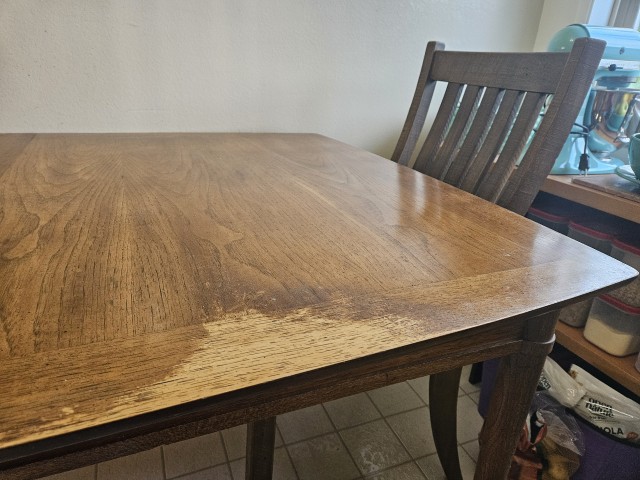
Over the years, the finish had become nothing more than a hard candy shell. Trying to wipe away a liquid resulted in a gummy mess that remained sticky when ‘dry’. Paper towels stuck under the slightest of elbow pressures. And removing the remnants required careful scraping to avoid further damage to the finish.
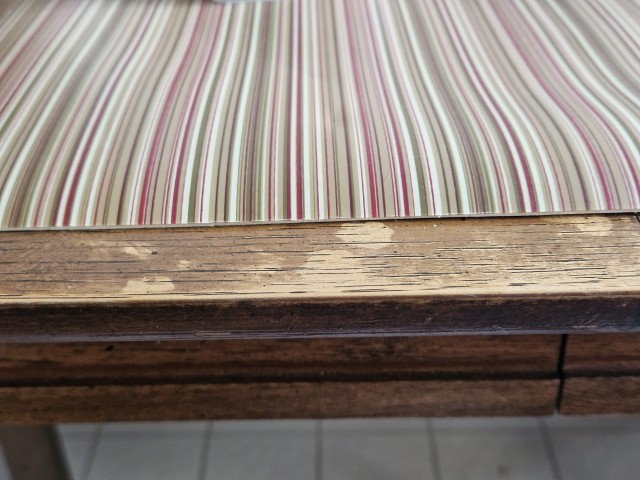
The finish’s downfall began with a few unnoticed drops of milk. They wiped away easily enough, but just as easily took the finish with them.

I could live with the spots and the forearm wear for a while, but I wanted to refinish the top some day.

But cleaning up a small spill had me rethinking the timeline. Refinishing to top became a top priority. The perfect time arrived when we had to wait for the correct set of legs to arrive for the Hairpin Tables.
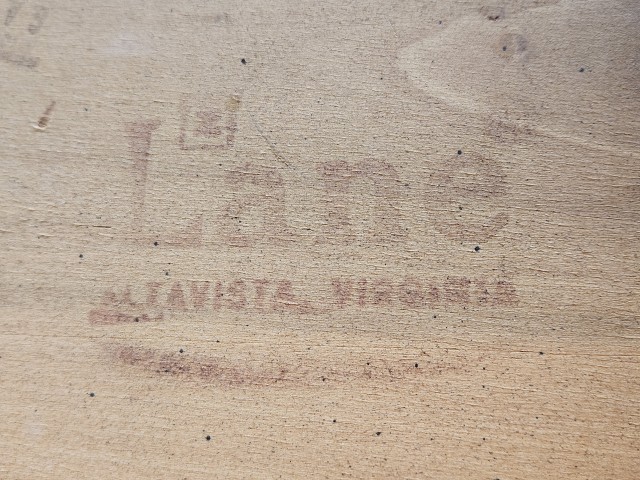
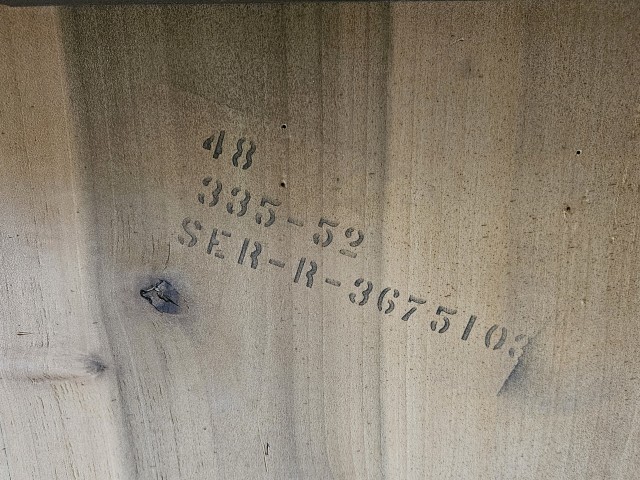
I tried and failed to find the style name or the date of manufacture online.
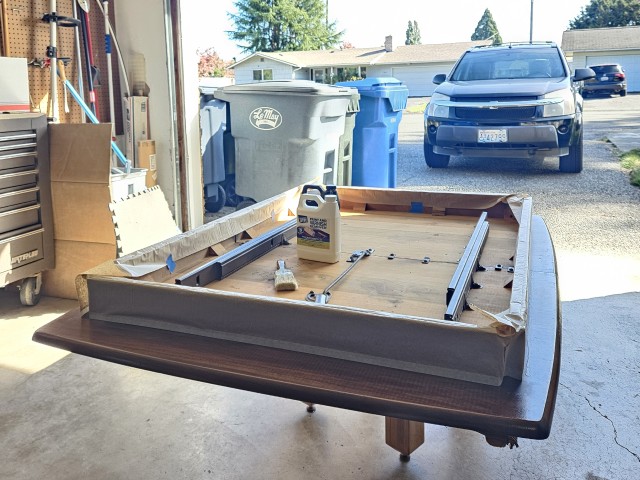
We began the refinishing on the underside. Dad brought a roll of pre-taped masking paper along with a variety of putty knives and scrapers.

We tried milk first, at my request, to see how well it worked when used on purpose. It did nothing! Either the finish on the underside hadn’t broken down enough, or the milk needs to be cereal milk to work its magic.
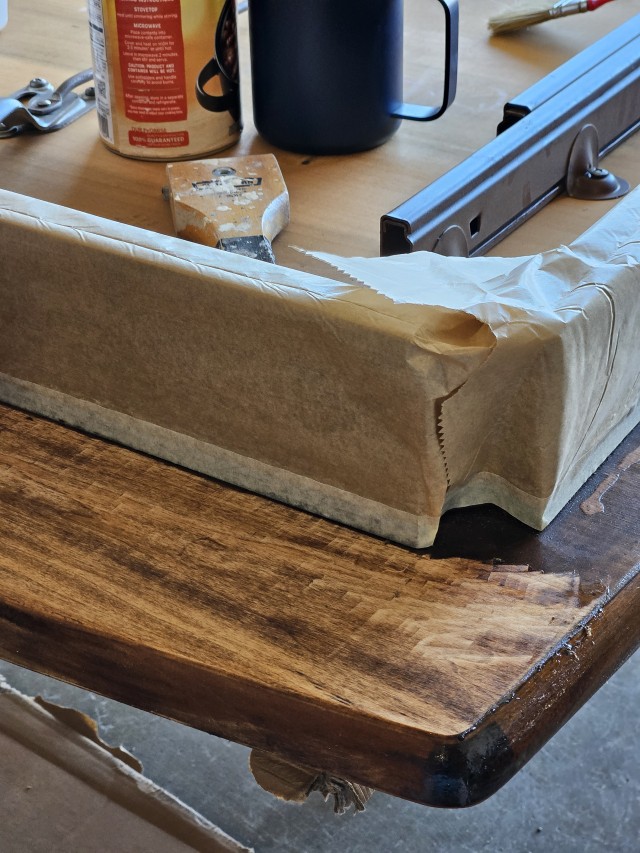
Dad also supplied two varieties of stripper. The first one he tried, the environmentally friendly variety, was less effective than cereal milk! So he switched to the regular variety.
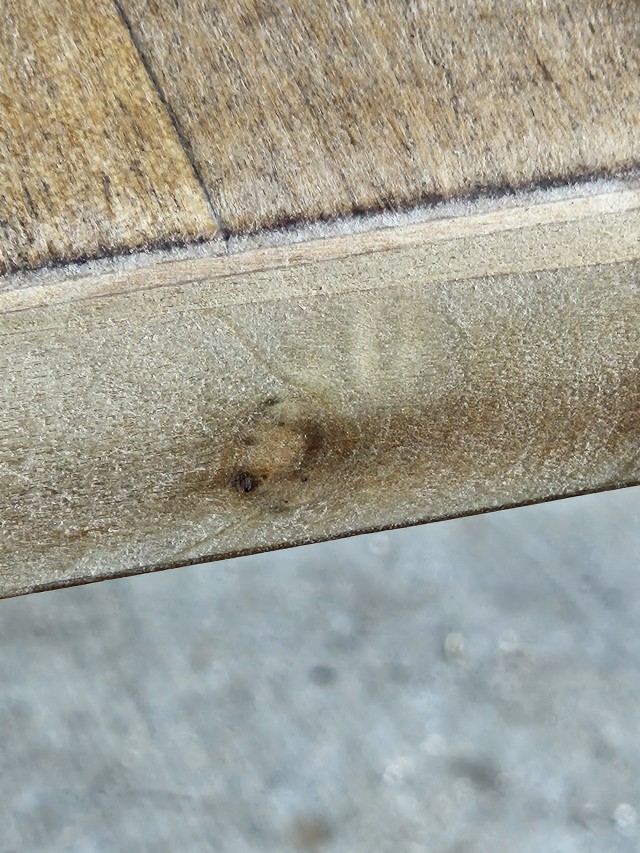
Stripping and sanding can only do so much. I could have tried sanding out the line of stain at the risk of sanding through the veneer. It wouldn’t be seen with the table right side up, so I stopped sanding before something catastrophic happened.
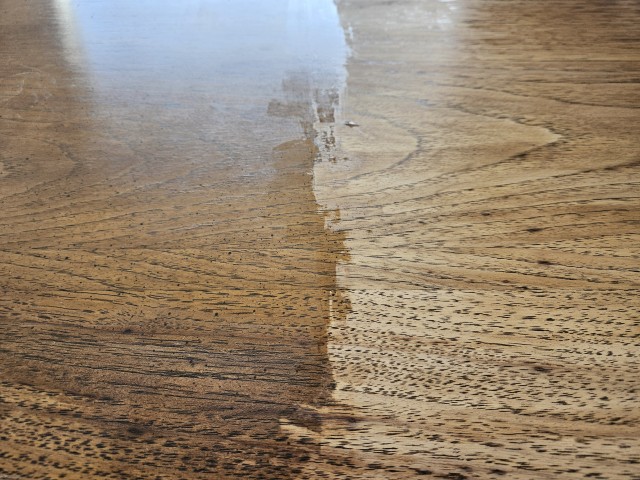
Here’s the top after the first of two rounds of stripper.
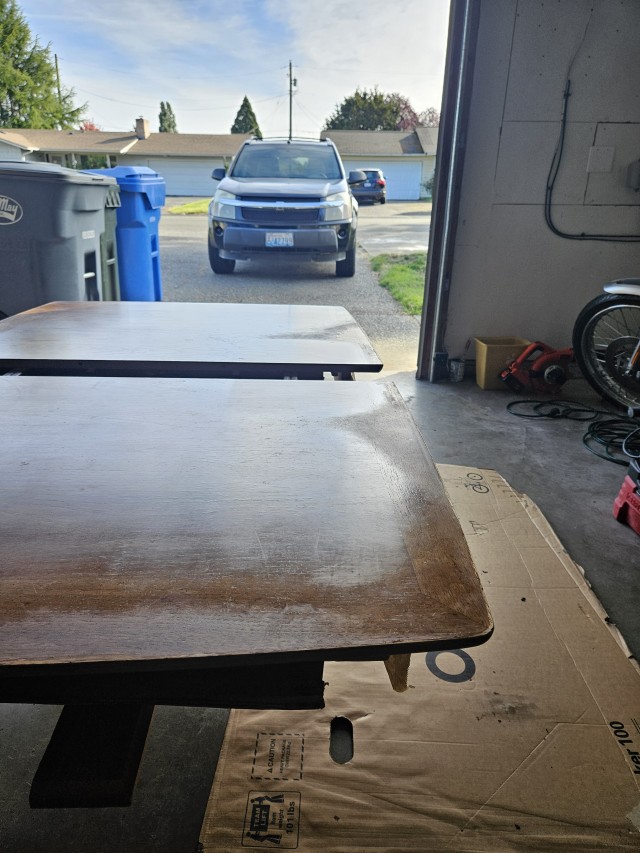
Here’s how bad things had gotten.

Here’s how it looked after stripping.
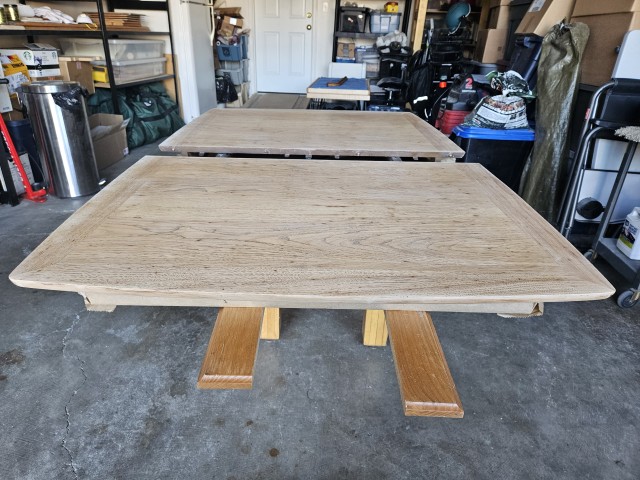
Here’s how it looked after sanding.
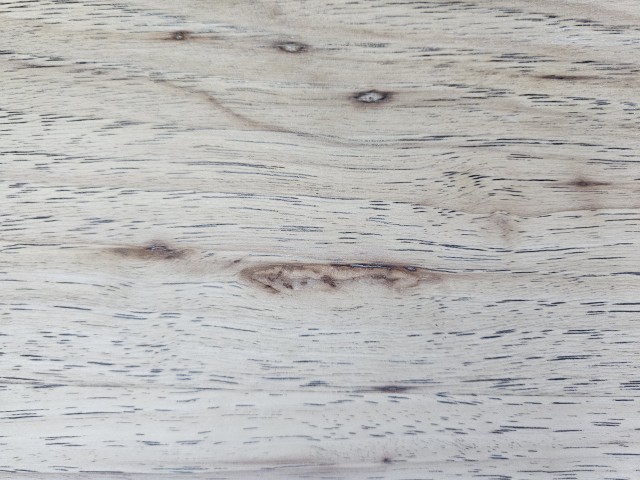
I love how the old stain remained in the knots.
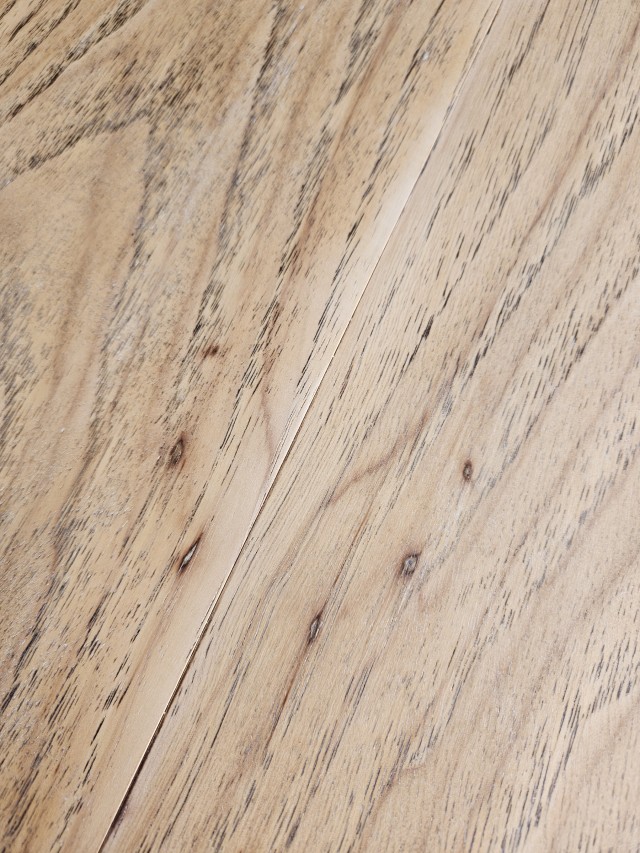
I also love how removing the old stain made the book matched veneer more visible.

Here’s how it looked after receiving two coats of Odie’s Oil.
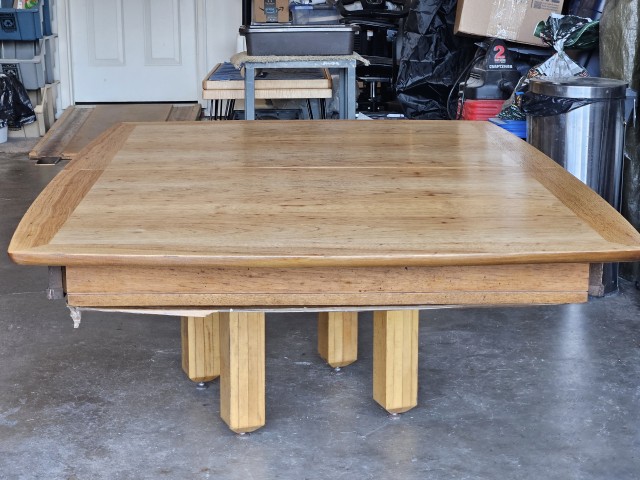
Here it is looking less orange.
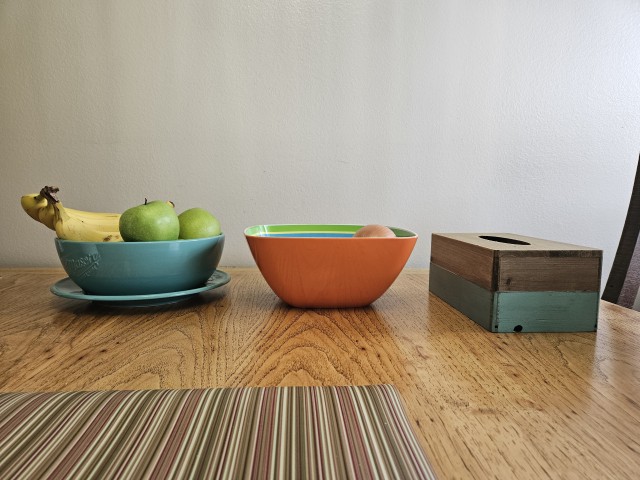
Here it is with (r-l) a Kleenex holder, a bowl of onions, and a bowl of fruit, also less orange.

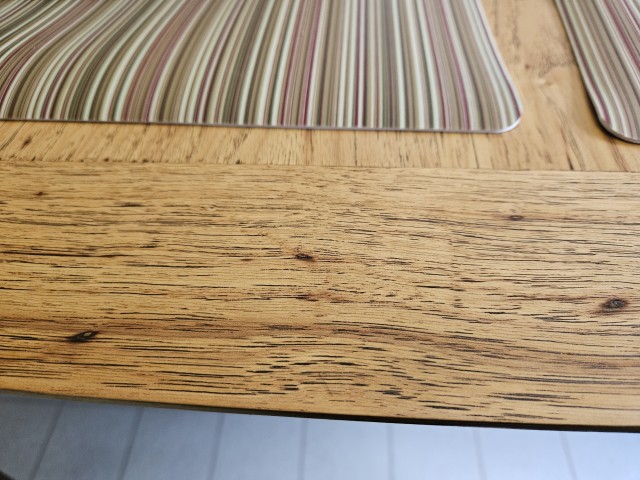
I also love how the new finish doesn’t hide the wood’s natural features, such as the knots and the darker stripe running along the edge.
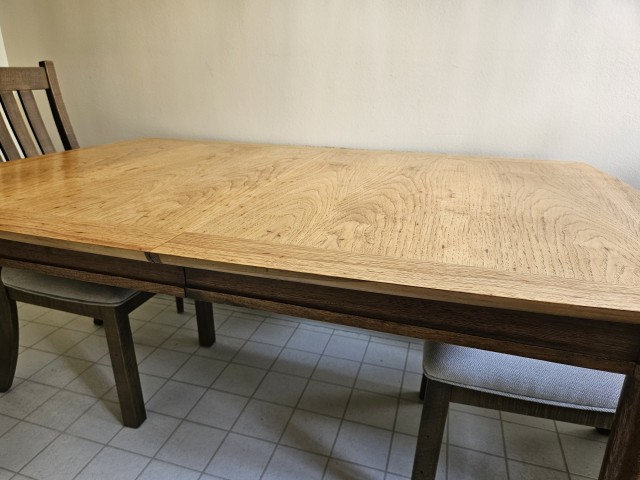

Not only did the old finish come off with milk, it also came off when the table was knocked (rammed) into the wall by a hotshot wheelchair pilot.
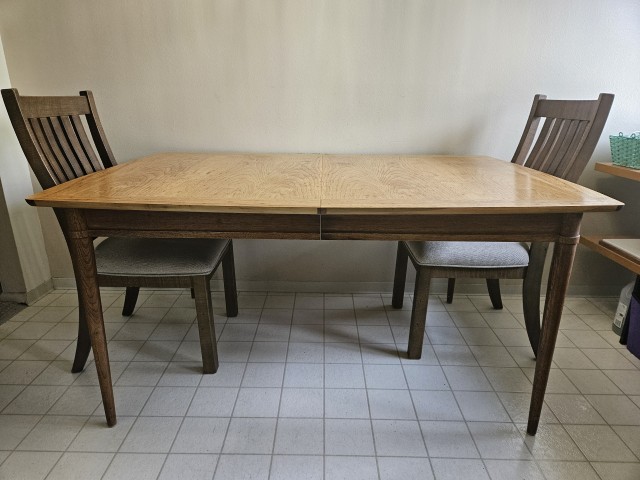
We bought these new chairs after one of the originals threw a spindle.
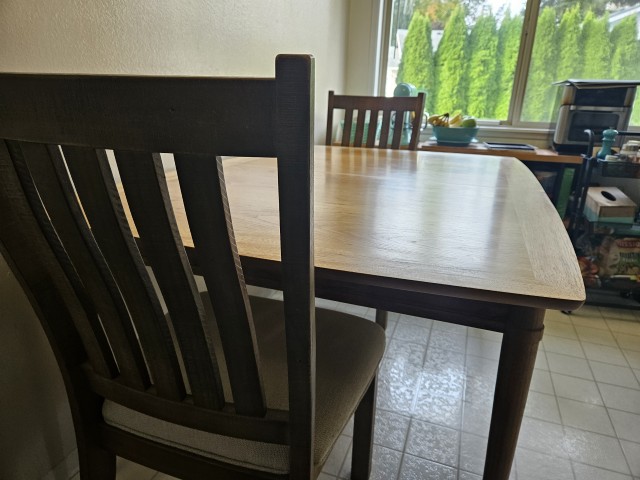
I have yet to sit on one.
That is absolutely beautiful! I cheer how well you rescued this heirloom! I have my childhood family table… butcherblock and severely damaged and falling apart. But I can’t get rid of it. I strongly emphasize with the TLC part of the TLC you put into your grandmother’s table.
The table turned out beautifully, Terry! Si glad I got to see and appreciate the restoration in person. I know Grandma and Grandpa would be tickled that 1) you are actually using it, 2) you lovingly restored it and 3) Gramps especially would appreciate how beautifully the finish shows off the grain. Well done, brother! ♥️